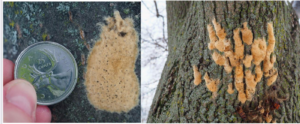Battling the Spongy Moth Outbreak in Northern Wisconsin
Forest County and Northern Wisconsin, is currently facing a challenging ecological situation: a widespread outbreak of the Spongy Moth (Lepidoptera: Lymantriidae). These voracious defoliators have the potential to wreak havoc on the local ecosystem, impacting not only the trees but also the broader wildlife and human activities.
The Spongy Moth, formerly known as the gypsy moth, is a notorious defoliator that primarily targets hardwood trees. This outbreak can be attributed to a combination of factors such as favorable weather conditions, lack of natural predators, and weakened tree health due to stressors like drought and disease. The larvae of the Spongy Moth are known to devour leaves at an alarming rate, potentially leading to tree mortality and reduced forest resilience.
The consequences of the Spongy Moth outbreak extend beyond mere defoliation. The health of the forest ecosystem is at risk as trees struggle to photosynthesize and produce food, impacting the food chain and habitat for various wildlife species. Additionally, the outbreak could influence recreational activities like camping, hiking, and fishing, as the defoliated landscapes may deter tourists. The economic impact could also be substantial, affecting local businesses dependent on tourism and forest-related industries.
Addressing the Spongy Moth outbreak requires a multi-faceted approach that balances ecological preservation and human intervention. Here are some strategies to consider:
Monitoring and Early Detection: Establish monitoring programs to detect early signs of infestation. Regular surveys can help identify affected areas and assess the severity of the outbreak.
Cultural Practices: Promote healthy forest management practices that strengthen tree resilience, such as proper thinning, pruning, and planting diverse tree species.
Biological Controls: Introduce natural predators and parasites that feed on Spongy Moth larvae. These can include parasitoid wasps and birds that help keep the population in check.
Chemical Controls: In cases of severe infestations, judicious use of insecticides may be necessary. Consult with the Land & Water or Forestry departments to ensure safe and effective application.
If you find Spongy moth egg masses, you can use the following methods to get rid of them. Since each egg mass contains from 500 to 1000 eggs, destruction of egg masses before hatch can have an impact on populations. Starting in the fall, search your property, including trees, building walls, outdoor furniture, wood piles, and play equipment, for egg masses.
- Using a putty knife or similar tool, scrape the egg masses into a plastic bag or can. Once collected, empty the contents of the bag into a container of soapy water (dish soap works well) and soak for two days. This is essential to kill the eggs. Don’t scrape egg masses onto the ground or try to crush them with your shoe as they will survive to hatch next spring. Any parts of the egg mass you are unable to scrape off can also hold surviving eggs.
- An alternative to physically removing egg masses is to saturate egg masses before hatch with a solution of horticultural oil. This will smother the gypsy moth larvae (caterpillars) within the eggs. You can make your own spray using vegetable oil and water and dishwashing liquid. Use a small spray bottle, household sprayer, or “supersoaker” water gun to soak the egg masses. Do not use motor oil or mineral oils. Spray the oil onto the egg mass until it is saturated.
Horticultural Oil Recipe
Mix one tablespoon of liquid soap with one cup of cottonseed oil. You can also use safflower oil, soybean oil or vegetable oil as an alternative to cottonseed oil. Mix 11⁄2 tablespoons of your oil mixture for every one cup of water. Shake mixture well before spraying.
For more information contact Steve Kircher, County Conservationist-Land Information/GIS Director at 715-478-1387 or by e-mail at .
Conservation Corner is a weekly article produced by the Forest County Land & Water Conservation Department. For more information contact Steve Kircher, County Conservationist-Land Information/GIS Director at 715-478-1387 or by e-mail at .

 Spongy Moth Egg Masses
Spongy Moth Egg Masses